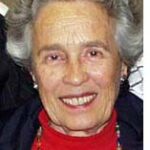By Eileen Wingard

SAN DIEGO — Yale Strom, the multi-talented artist-in-residence at San Diego State University’s Judaic Studies Department, introduced his latest composition on the second half of the program last Tuesday evening at the Lyceum Theater. Thanks to the support of a generous grant, he wrote a string quartet based on motifs gathered from listening to the songs of the local Somalian community.
During intermission, prior to hearing the Somalia Quartet, tasty, deep fried vegetarian pockets were served, giving the audience a taste of Somalian food before we were treated to the aural repast.
Strom’s Somalian Quartet was well-executed by the Hausmann Quartet, the resident string quartet at SDSU since 2010. The members of the Hausmann Quartet are violinists Isaac Allen and Bram Goldstein, violist Angela Choong and cellist Alex Greenbaum.
On first hearing, much of the syncopated material reminded me of works by Louis Gottchalk, the 19th century American composer, whose music was inspired by the songs and dances of the African slaves. Many of the themes had the syncopated lilt of cakewalks. The second movement had the most recognizable construction, with contrasting sections returning and a surprise coda. Strom incorporated tapping on the wood of the instruments, simulating percussion instruments. In the third movement, he had the violins and cello clapping to accompany the violist as she played a rhythmic dance.
The final movement used mid-eastern scales to convey the Arabic influence in Somalia. Saudi Arabia and Yemen are just across the water.
Strom’s next project will be to incorporate the music of the local Chaldean Community in a similar type of composition.
The program opened with a string quartet by the great Hungarian composer, Bela Bartok. Bartok went out into the hinterlands of Hungary and Rumania to gather folk material, which he later incorporated into his music. He often clothed his themes in dissonance, as in this string quartet. The Hausmann’s played with excellent ensemble, fine intonation, and a large palette of dynamics, all, wonderful attributes for such an ensemble. However, in the two outer movements, their sound lacked the vibrant warmth necessary to balance the dissonances. The fast movement, on the other hand, was a tour de force, with driving rhythms punctuated by exciting contrasts and unexpected pauses.
Their sound warmed up when joined by Strom in two Klezmer selections. The Kolomaika was especially impressive, where each instrument had its say and seemed to play with improvisatory flourish, interacting with Strom. That piece brought the loudest applause of the evening.
Unfortunately, there were no printed programs, therefore, the audience did not know how many movements to expect and nothing was said to prepare the listeners in this regard.
The Hausmanns serve as an important musical force in the community. They are teachers, coaches and lead chamber music workshops.
San Diego State University is, indeed, fortunate to have Yale Strom and the Hausmann String Quartet as artists-in-residence.
*
Wingard, a freelance writer, is a former violinist with the San Diego Symphony. She may be contacted via eileen.wingard@sdjewishworld.com